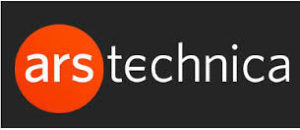 NDIA is cited frequently in an article posted this week by Ars Technica on the differences and gaps in free and low-cost plans being offered by some major Internet Service Providers in response to the COVID-19 crisis.
NDIA is cited frequently in an article posted this week by Ars Technica on the differences and gaps in free and low-cost plans being offered by some major Internet Service Providers in response to the COVID-19 crisis.
The online journal’s Jon Brodkin points out that “Offers to hook up poor people during the pandemic… vary greatly by region, depending on which ISP is dominant locally”. He quotes NDIA Executive Director Angela Siefer: “We’ve looked at this every which way. We don’t see any alternative to a federal broadband subsidy during the health crisis.”
Brodkin’s article leads with Verizon’s policy of offering a $20 monthly discount to new low income users of its FIOS fiber-to-the-home product, but not to similar households in Baltimore, Buffalo, and other communities that are limited to DSL service because the company hasn’t deployed FIOS. It goes on to highlight major ISPS that have not created “pandemic-specific offers to poor people”, including Frontier, Century Link and Cincinnati Bell. And it concludes with several paragraphs on “Problems in Charter territory”, citing NDIA’s reports of lengthy wait times to enroll in Charter Spectrum’s “free sixty days for students” plan, and criticism of the company’s failure to link that plan to its existing Internet Assist program.
In light of the inconsistencies and gaps in the service providers’ voluntary “COVAD-19 plans”, NDIA’s Siefer told Brodkin:
We’ve looked at this every which way. We don’t see any alternative to a federal broadband subsidy during the health crisis… Setting aside all the ways that Internet keeps a household functioning during this health crisis, if people do not have Internet, they will certainly not stay in their homes. The digital divide is now a public safety issue.
Read the full article here: “Verizon refuses to give DSL users its low-income deals during pandemic”.
